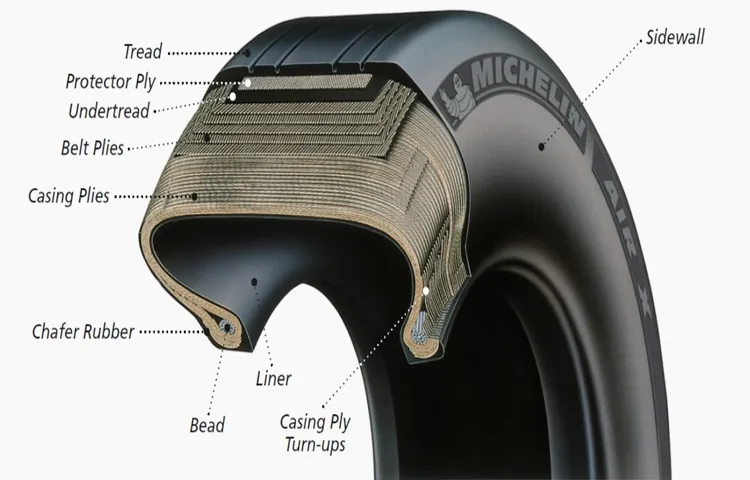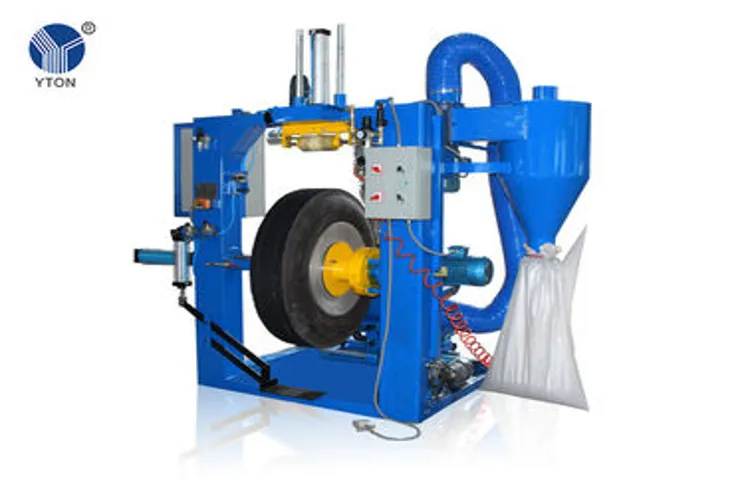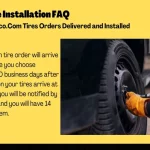Are you looking for a way to extend the life of your tires without breaking the bank? Tire recapping may be the solution you’ve been searching for. Recapping, also known as retreading, involves applying a new layer of rubber to a worn-down tire, essentially giving it a second life. This process not only saves you money, but it also helps reduce waste and benefits the environment.
But is tire recapping really efficient? Let’s dive in and explore the benefits of this cost-effective solution for your tires. Imagine your tires as a marathon runner. They endure wear and tear from the road, just as a runner’s shoes would suffer damage from the pavement.
Eventually, the treads on your tires wear down and become thin, making them more susceptible to punctures and slipping. This is where recapping comes into play. By applying a new layer of rubber, the treads become deeper and more durable, giving you a safer and longer-lasting tire.
Not only does tire recapping extend the life of your tires, but it also helps reduce the number of tires that end up in landfills. When tires are disposed of, they release harmful chemicals into the environment which can have negative effects on the ecosystem. By recapping tires, we can reduce the number of tires that need to be disposed of, easing the strain on the environment.
In addition to its environmental benefits, tire recapping is also an affordable alternative to buying brand new tires. The cost of recapping is typically around 30-50% less than the cost of purchasing new tires. This can add up to significant savings over time.
Overall, tire recapping offers an efficient and cost-effective solution for extending the life of your tires. With its environmental benefits and money-saving advantages, it’s worth considering as an option when your tires start to wear down. So why not give your tires a second life and consider tire recapping?
Table of Contents
What is Tire Recapping?
If you’re wondering what tire recapping is, you’ve come to the right place. Also known as tire retreading, recapping is the process of rejuvenating worn-out tires and giving them a new lease of life. The worn tire is stripped of its old tread and a new layer is added to it.
Recapping tires can save you money since it’s cheaper than buying new tires and it helps the environment by reducing the number of tires that end up in landfills. It’s important to note that not all tires are suitable for recapping. Only tires that have not been driven on for too long and with minimal damage can be recapped.
Recapped tires also don’t last as long as new tires, but they’re still a great option if you’re trying to save money and reduce your carbon footprint.
Understanding the Process
Tire recapping is a process often referred to as “retreading” or “remolding” that involves restoring worn-out tires to their original condition. It’s a cost-effective and eco-friendly way to get the most out of your tires and reduce waste. In the recapping process, the old damaged tread is removed and replaced with a new one, ensuring a smooth and safe ride.
The new tread is usually made of a similar material to the original tire, ensuring durability and strong traction over a wide range of different terrains. Recapping tires is an essential process in the trucking industry, where it’s common to rely on recapped tires to save money and increase efficiency. By opting for tire recapping, you can extend the life of your tires and increase your savings, all while reducing your environmental footprint.

Advantages of Recapping Tires
Tire recapping is a process of renewing a worn-out tire by replacing the old tread with a new one. The tire is buffed down to the casing, and a pre-cured rubber tread is bonded to the casing to renew the tire’s life. Recapping is a popular choice because it can save up to 50% of the costs of purchasing new tires.
It is an eco-friendly practice that helps reduce tire waste in landfills. Recapping also offers several advantages such as increased mileage, consistent grip, and enhanced safety. Recapped tires use high-quality materials, and the process involves strict quality control measures that ensure durability and longevity.
However, it is essential to note that not all tires can be recapped, so it’s important to consult with a tire expert before making a decision. Overall, tire recapping is an affordable, sustainable, and safe option for extending the life of your vehicle’s tires.
Types of Recapping
Tire recapping, also known as tire retreading, is a process of renewing old and worn out tires by applying a new layer of tread on the existing tire casing. The process involves buffing the old treads off the tire’s casing to create a rough surface which the new tread can adhere to, then applying a layer of uncured rubber to build up the tire’s thickness. The tire is then placed in a mold and the new rubber is cured, creating a bond between the tire casing and new tread.
There are different types of recapping available, including hot and cold retreading, pre-cure retreading, and mold-cure retreading. Hot and cold retreading involves applying new rubber directly to the existing tire while the latter requires a pre-cured tread that is later bonded to the tire. Pre-cure retreading is the most common while mold-cure retreading is better suited for larger tires such as commercial trucks or heavy machinery.
Retreading a tire can be a cost-effective way of extending their lifespan while reducing the amount of worn out tires that end up in landfills, making it an eco-friendly solution.
Pre-Molded Tread Recapping
Pre-Molded Tread Recapping Types of Recapping Pre-molded tread recapping is a popular process that helps extend the life of tires, making them more cost-effective and eco-friendly. There are different types of recapping available, each with its unique benefits. The first type is the precure method, which uses a precured tread strip bonded to the casing utilizing a specialized press.
This method produces a high-quality finish with uniform and consistent treads. The second method is the mold-cure system, which involves vulcanizing an uncured rubber compound to the casing, ensuring an optimal bond. This method provides more flexibility in terms of the design of the tire, and the finished product is more durable.
Another type of tread recapping is the OTR (off-the-road) mold-cure method, which utilizes different rubber compounds for challenging terrains such as mining, earthmoving, forestry, and construction. The OTR method produces a tire that is more resistant to cutting and chunking than brand new tires are. Ultimately, the type of recapping method chosen depends on the application and the specific needs of the tire.
Uniroyal Recapping
Uniroyal recapping process involves refurbished tires, which are considered a reliable and cost-effective way of extending the life of worn out tires and passing safety regulations. Types of recapping include Mold cure, Pre cure, and Bead-to-Bead. Mold cure recapping requires the use of a specially designed mold that shapes new rubber over the existing tire.
Pre cure recapping involves the bonding of a new tread onto a cured tire casing, and Bead-to-Bead recap uses a new casing to rebuild the tire from scratch. Uniroyal offers its own recapping process called the Uniroyal DuraShield retreading process, which uses advanced manufacturing technology and rigorous quality control to provide a reliable, high-quality tire that can help lower costs and keep your fleet moving.
Tire Regrooving
Tire Regrooving When it comes to extending the life of your tires, regrooving is a great option. This process involves cutting new grooves into the existing tread, which can restore the traction and grip that has been lost over time. There are two main types of regrooving: cold and hot.
Cold regrooving involves using a sharp blade to cut new grooves into the tread. This process can be done on the vehicle without removing the tire. Hot regrooving, on the other hand, involves heating the existing tread and then cutting new grooves into it.
This process is typically done at a tire retreading facility and requires the tire to be removed from the vehicle. Both methods have their benefits and drawbacks, so it’s important to consult with a tire professional to determine which option is best for your specific situation. By regrooving your tires, you can save money on replacement costs and improve safety on the road.
Is Recapping Right for You?
Tire recapping, also known as retreading, is a cost-effective and eco-friendly way to extend the life of your tires. Rather than completely replacing an old tire, the old tread is removed and new rubber is applied to the casing, creating a “new” tire. This process can be done multiple times, allowing one tire casing to potentially last for years.
Recapping can also be customized for specific driving conditions, such as adding deeper tread for off-road driving. However, not all tires are suitable for recapping, as severely damaged or worn tires may not provide a safe casing for the process. It’s best to consult with a professional and weigh the costs and benefits before deciding if recapping is the right choice for you.
But in general, tire recapping can be a smart choice for those looking to save money and reduce waste.
Factors to Consider
If you’re considering whether recapping is the right choice for you, there are several factors to consider. First and foremost, think about how often you plan to use your vehicle. If you’re frequently driving long distances or using your car for work, recapping might be a good option to extend the life of your tires and save you money in the long run.
Another factor to consider is the condition of your current tires. If they’re already showing signs of wear and tear, recapping might not be the best choice, as it could result in uneven wear and potentially compromise your safety on the road. Lastly, consider the cost of recapping versus purchasing new tires.
While recapping can be a cost-effective solution, it’s important to weigh the pros and cons to ensure it makes sense for your individual situation.
Industries that Benefit from Recapping
Recapping is an excellent solution for industries seeking cost-effective alternatives to purchasing brand new equipment. There are many industries that benefit from recapping, such as the agriculture, construction, and transportation industries. Recapping tires can significantly increase the lifespan of the tire while saving the company money.
When the rubber tires wear down, they are replaced with new rubber compounds that are molded onto the existing tire. Recapping is also an eco-friendly choice as it reduces waste and helps the environment. If you are looking to save money on equipment and help the environment, recapping may be the right choice for you.
Conclusion
Tire recapping is like taking your favorite pair of shoes to the cobbler for a tune-up. Instead of throwing away a perfectly good tire with worn-out treads, it gets a new lease on life with a fresh layer of rubber. It’s a smart and eco-friendly way to extend the life of a tire and keep it rolling for miles to come.
So the next time your tires are looking a little rough, consider giving them a second chance at the recapping station!”
FAQs
What is tire recapping?
Tire recapping, also known as retreading, is the process of reusing old tire casings by replacing the worn tread with a new one.
Is tire recapping safe?
Yes, tire recapping is safe if it is done properly by a trained professional. Retreaded tires undergo rigorous testing and quality control before being sold to consumers.
How much does tire recapping cost?
The cost of tire recapping varies depending on the size and type of tire. On average, retreading a tire costs about half of what it would cost to buy a new tire.
Can I recapped any type of tire?
Not all tires can be recapped. Tires that have too much damage or have been driven beyond their recommended lifespan are not eligible for recapping.
How many times can a tire be recapped?
The number of times a tire can be recapped depends on the tire’s condition and the specific recapping process used. A tire can usually be recapped 1-3 times.
How does retreading benefit the environment?
Retreading saves resources and energy by reusing old tire casings rather than producing new ones. It also reduces tire waste and the need for tire disposal.
What industries commonly use recapped tires?
Recapped tires are commonly used in the commercial trucking and aviation industries, as well as in off-road vehicles like tractors and mining equipment.


